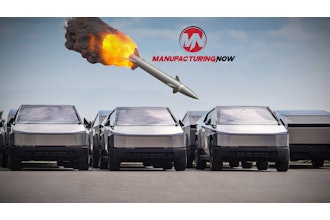Humanoid robots are still a long way from full-scale rollouts across industrial, commercial and other settings. But if this week’s arrivals tell us anything, it’s that the pace of development may be speeding up.
Boston Dynamics earlier this week made news when it bid a fond farewell to Atlas, the hydraulic robot it’s been tinkering with for nearly a decade. The company even assembled a send-off video full of clips of Atlas falling down. However, Boston Dynamics wasted almost no time in introducing its new all-electric version of Atlas.
The new Atlas is already showing off a slightly unnerving amount of dexterity to go along with the ability to lift heavy and irregular shaped objects thanks to new gripper variations the company is trying out.
Most Read on IEN:
- Toxic Ingredients Found in Weight Loss Supplements
- Major Auto Supplier Faces Fine After Fatal Crushing Accident
- Philips, Which Made Millions of Defective CPAP Machines, Ordered to Overhaul Manufacturing
- Tesla to Cut More Than 10% of Workforce
The new Atlas will be tested by Hyundai, which has made an investment in Boston Dynamics in the hopes of “building the next generation of automotive manufacturing capabilities.”
This week also saw Mobileye founder Amnon Shashua debut his new company, Mentee Robotics, and its new humanoid robot, MenteeBot. The company expects its end-to-end humanoid robot will be able to handle a wide spectrum of activities in both households and industrial warehouses while responding to verbal commands helping to direct navigation, locomotion, scene understanding, object detection and localization, grasping, and natural language understanding.
Mentee Robotics said it wants to have a production-ready prototype deployed by the first quarter of 2025. The humanoid robot will be powered by camera-only sensing, proprietary electric motors that support dexterity, and fully integrated AI, according to the company.
Finally, NVIDIA this week unveiled Project GROOT, which the company is calling a “general-purpose foundation model for humanoid robots.” The platform is designed to help robots understand natural language and emulate movements by observing human actions.
The humanoid robot industry is poised for massive growth over the next few years. According to Goldman Sachs, the global market for the machines could be worth up to $38 billion by 2035.
Click here to subscribe to our daily newsletter featuring breaking manufacturing industry news.






















